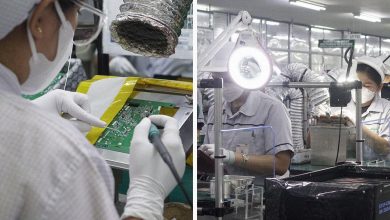Among trends identified as a force that will reshape the world and business in the coming decade, the she-conomy ranks near the top. With a forecast one billion women in developing markets expected to become economic contributors, the effect will be considerable.
Women have always wielded substantial influence on household spending in the Philippines. As much as 70 percent of household’s FMCG spending is influenced by women, extending beyond grocery shopping to investing in the family’s future, whether through education, additional classes or tools such as computers to help kids get ahead.
“Brands recognize the woman as the entry point for products and services. Especially when it comes to the household, it is the mother that brands try to win over. All signs of the power maybe even dominance of the woman consumer,” said BBDO Guerrero planner Pepper Feraren.
Though anecdotal, statistics from his agency underscore this dominance. The gender split for products usually skews to the gender the product has been designed for. But the picture changes completely by the time briefs are issued to favor women over men (43 percent to 13 percent). Briefs for parents are skewed 100 percent to moms.
Has the Philippine she-conomy become the economy? Not a big stretch really. This may be a patriarchal society, but “women are the real power behind the throne”, said Y&R interactive head Neri Neves.
Local women have a long tradition of supplementing household income, even without joining the formal economy. Y&R’s business strategy director Pchy Hernandez and senior research manager Riza Lanot, who took a qualitative look at the segment for adobo, noted that “even women who are still studying are already entrepreneurs – they invest in food carts, they blog and they find a way to earn from their passions, photography, make-up, styling, jewelry designing etc”.
Thanks to the internet, budding entrepreneurs are finding markets for their products and services.
Empowerment, even the rise of female millennials, are spurring significant change in the behavior, aspirations, expectations and attitudes of women, say FMCG advertisers, a group that arguably has the most contact with the segment.
Across all life stages, this market segment is in flux.
Shifting focus
Marketers spoke of behavior and attitude changes, by degrees admittedly, across all life segments. The mom segment, according to Isabel Falco, Procter & Gamble’s brand manager for Pampers, has definitely evolved in her seven years of engaging with them. “When I talked to women in their homes before, you could feel that their world was basically their household and the baby was the pinnacle (of their lives). It would start and end with their baby,” said Falco. “Now when I talk to them, the baby is still a very important part of their life but they are more complete. They have aspirations for themselves.”
Self-actualization
The desire among women to realize their full potential has become more evident in the last few years. JanJizelle Ang, P&G Philippines country marketing manager for feminine care, described it as a shift to self-actualization across multi-faceted areas of a woman’s life. “Before, being the perfect mom was enough,” Ang said, adding that women now want to be their best selves in every role in their multi-faceted life – daughter, sister, friend, employee, manager, etc. “Women realize they are capable of doing this, and that’s how – from a brand standpoint – we have tried to level it up.”
Brands such as Merck’s Sangobion have taken steps to help women in this regard. Its new ‘Go Love Life’ campaign is anchored on pocket events to pamper women, a way for Sangobian to remind them to care for themselves in the same way they care for their loved ones. Women were asked to pledge to ‘go love life’ to help them become their best selves.
“The objective is to give women the opportunity to have an advocacy for themselves,” said Rissa de Guzman, account management AVP of Aspac, Sangobion’s agency.
De Guzman said the pledges showed real thought: From wanting a work-life balance to drinking more water and even spending more time with the dog. “You know it’s genuine, that it’s not far-fetched, or beauty pageant answers for world peace because the pledges are for some but personally significant things.”
More ‘me’ time
While still putting family first, local women are carving out a little more time and expenditure for themselves. “That’s actually a trend we have seen over the last 10 years and again it’s been magnified over the last five years… where they put some money towards themselves, where they now start splurging on themselves,” said Gina Lorenzana, Unilever Philippines’ vice president, personal care.
The investment towards themselves can play in any number of ways, from buying beauty products, spending more on salon services or eating out or investing in more premium brands. “Now this is an immensely powerful change because a Filipina has always been about family and not thinking about themselves. I think this was brought about by financial empowerment,” Lorenzana added.
The change is helping bring about the rise of more premium products, what Lorenzana termed “affordable luxuries”. It might not be a luxury bag worth hundreds of thousands, but a pricier brand of face cream or styling products.
In the last two years, Unilever brought two of its more premium brands to market – Tony & Guy and Tresemme. “In a country where most products become accessible because of small unit packs, these brands don’t sell sachets,” said Lorenzana. “It’s for people who won’t scrimp on themselves and will buy bigger packs.”
Expanded needs
Women have also become more discerning, more specific in what they want from brands in the last five years, say marketers. Much of that has to do with greater internet access, particularly the rise of social media, arming women with the knowledge to be more discerning in their choices, while growing income levels have given the means.
This demand has become apparent right across the FMCG spectrum, from skincare to dishwashing liquids.
“In terms of their skincare regimen we have been seeing women getting very specific in their needs; they’re looking for very specific benefits,” said Arthur Pēna, brand manager for P&G’s Olay.
The brand, which groups its products into “boutiques”, launched with Total Effects in 2006, but over the past eight years has expanded to five boutiques. It now has products for younger consumers, hydration, lighter as well as deeper wrinkles. “Women are looking for multiple solutions – cleanser, toner, moisturizer, serum – as opposed to the 90s where one classic Oil of Olay would do. Now it is so many needs across different life stages.”
Age is just a number
While the Philippines has one of the youngest populations in Asia, marketers are finding new opportunities at the other end of the age spectrum. The ‘50 is the new 40’ trend has taken root among women here as well.
“In the past, when we say marketing to women, we would only market to 20-35 year olds,” said Lorenzana. “Now it’s extended to Filipinos 35 and above because they have a lot of disposable incomes, more discerning tastes, are more sophisticated, more premium and specialized. For marketers and advertisers, this creates a whole lot of opportunity.”
Marketing to women
Because the internet has given women access to greater knowledge and a way to research brands, women now have certain expectations of the way brands engage them. “Now, it’s about resisting the usual points of communication,” said Y&R’s Hernandez and Lanot, noting that women can now “smell a sell a meter away”.
“They know how certain we are that the product works or how genuine we are when we say the brand understands them.”
While TV can help with awareness, the real influence comes from social media, opinion leaders and blogs.
And advocacy. Albet Buddahim, Avon Philippines’ head for digital and business transformation, says the trifecta of aesthetics, benefits and value may work for men but women consumers need something more. “With men, it’s more mind only,” he said. “With women, it’s mind and heart. If you grab the mind only, they will not give you their loyalty. That’s why a lot of mom brands have their advocacies.”
Avon has advocacies against breast cancer and violence against women. “Even our business model is about benefiting women. The founder of the company really started with a women empowerment theme and even if the company can play in retail today, they choose not to because we are about empowering women,” Buddahim added.
A shift too far?
BBDO’s Feraren believes the pendulum may be swinging back with female empowerment leading to the near exclusion of men in advertisers’ focus in advertisers’, particularly for so-called mom brands.
“For the first time, the feedback I’m hearing from women is a commentary on the absence of men. Most especially in talks with mothers who are voicing out the importance of the father within the family and contrasting it with his absence in advertising.
“I’ve also seen my first framework on male life-stages and read my first study on the identity crisis of Filipino males. Two of the biggest Filipino trends, OFWs and BPOs, are always reported with their corresponding effects on the change in conventional family structure.”
Feedback suggests gender stereotyping in commercials actually cuts both ways an issue raised in discussion provoked by the agency’s ‘Labels Against Women’ campaign for Pantene.
“Every stereotype for women comes with an equivalent and just as harmful stereotype for men,” he added.“ The biggest challenge is now balance. The industry has to stereotype. We have to find the ties that bind unique people into a serviceable target market. But in so doing, we also have to maintain a greater degree of sensitivity to the pressures and expectations we indirectly place on both genders.”
For Feraren, the biggest shift not a pure woman’s shift but rather a shift away from traditional gender assignment towards a needs-and-abilities based assignment that either gender is free to participate in.
Words: Sharon Desker Shaw
This article originally appeared in adobo magazine issue #52, July-August 2014










